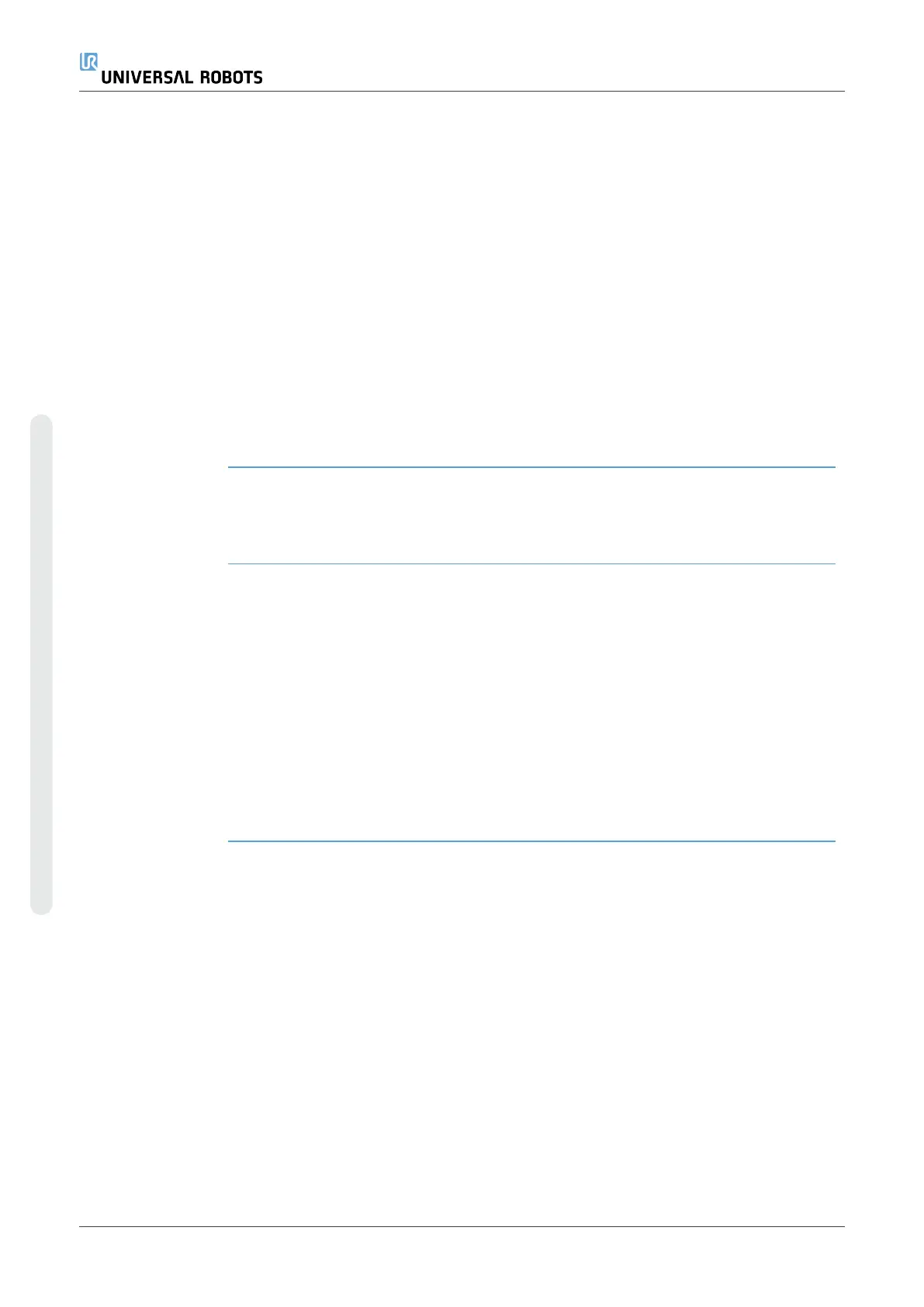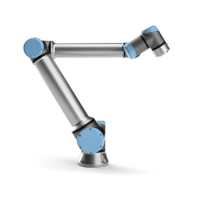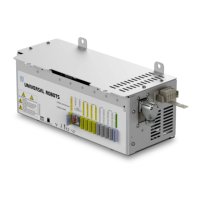Detail A waypoint with the position given by a variable, in this case
calculated_pose
.
The variable has to be a
pose
such as var=p[0.5,0.0,0.0,3.14,0.0,0.0].
The first three are
x,y,z
and the last three are the orientation given as a
rotation vector
given by the vector
rx,ry,rz
.
The length of the axis is the angle to be rotated in radians, and the vector itself gives the
axis about which to rotate.
The position is always given in relation to a reference frame or coordinate system,
defined by the selected feature.
If a blend radius is set on a fixed waypoint and the waypoints preceding and succeeding
it are variable or if the blend radius is set on a variable waypoint, then the blend radius
will not be checked for overlap (see Blendingbelow).
If, when running the program, the blend radius overlaps a point, the robot will ignore it
and move to the next one.
Blending
Description Blending enables the robot to smoothly transition between two trajectories, without
stopping at the waypoint between them.
Blending makes your robot program run faster because, when you create a smooth
transition between trajectories, you avoid slowing down an acceleration between
trajectories.
See the following sections for additional information on blending:
•
Blend Parameterson the facing page
•
Blend Trajectorieson page214
•
Conditional Blend Trajectorieson page215
UR10e 210 User Manual
Copyright © 2009–2024 by UniversalRobotsA/S. All rights reserved.

